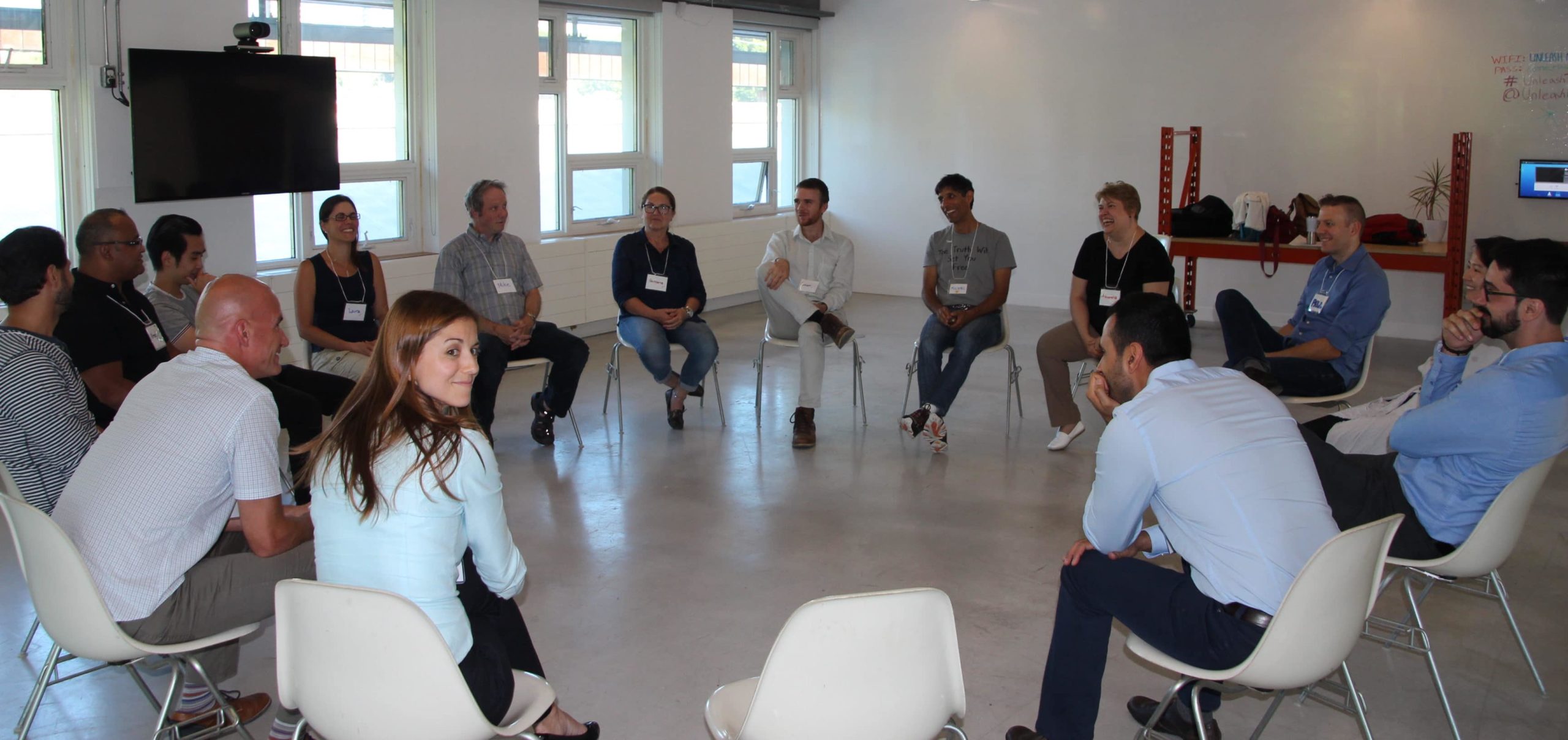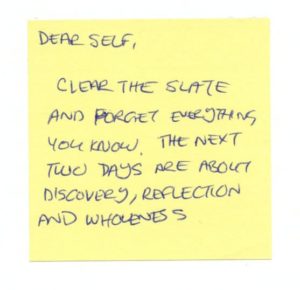Do you want to know how to create transformational experiences for others?
I have recently discovered what I have been doing and am writing this post to share my understanding of it. My hope is that you find something valuable.
Transformational Experiences
To give you a taste of what I am talking about, here are some things people have said in my recent Certified Agile Leadership (CAL1) Trainings:
- “Enlightening, Powerful, Life Changing.” – Charlotte Tan, Agile Program Manager
- “Amazing. Life-changing. Mind Opening.” – Michelle Krupa, Director Agile COE
- “Enlightening. Awesome.” – Mark Staelgraeve, Sr. Project Manager
- “Mind-opening, Intense, Deep.” – Michael Sapp, Program Manager
- “Enlightening. Uplifting. Transformational.” – Frank Leong, General Manager
- “Powerfully awakening and inspirational for my personal journey.” – Danielle Whelan, Agile COE Lead
- “Enlightening, Inspiring, Energizing.” – Yashar Rassoulli, CTO & co-founder.
These are powerful experiences. What’s going on here? How can we foster this?
Start with People
 I start the training with everyone sitting in a circle. I use an expanded version of Check-in. I guide people in a light meditation to become present with thoughts, feelings and body sensations. To fully welcome themselves just as they are. I ask them to connect with their highest intent for being at the training.
I start the training with everyone sitting in a circle. I use an expanded version of Check-in. I guide people in a light meditation to become present with thoughts, feelings and body sensations. To fully welcome themselves just as they are. I ask them to connect with their highest intent for being at the training.
Once everyone is back, I ask them to share their name, how they are and what they want. I go first using the script: “Hi, I’m Michael. I’m checking in. What’s alive in me now is … I want …”.
Oh yeah, important point: I tell them that EVERYTHING is OPTIONAL. What is most important is that everyone honour themselves. So passing on any activity is welcome. Including check-in.
Comment: I have run meditation groups outside of work and at work. So my approach feels comfortable and authentic for me. Please use whatever is in your life practice so that you are fully authentic. Authenticity increases safety.
Comment: I love the spirit of Core Protocols and use some of the language. I believe that they point to something very beautiful once we get past the constraints of the structures.
Invite a Shared Journey
How do you turn a group of training attendees into a community? (I’d say “team” but we are usually to big to really be a team).
I start by inviting a shared journey during the guided meditation. I say stuff like this:
“Now that you have connected with your highest purpose for being here … I invite you to notice it is not something that you can achieve on your own. All of us need to work together to support you getting what you want. We need help from the environment: this space, the people who bring the food, electricity, etc. We are in a complex system and many things need to happen to give you what you want. Given that it is not something that you can achieve on you own the only sensible thing is to surrender your outcome. I invite you to surrender it to … the universe … to your higher sacred self … to your sense of God or divine … to whatever fits with your reality.”
As I write this, I realize that it’s serious magic – a mix of NLP and my understanding of the laws of the universe. The words work since they are true for me. (And surrender is a working edge for me). So please only use what is authentic – to inspire your own words.
Note: This step is optional. It’s what I do that makes a difference. And you can safely go to the next step without it and still get good results.
Reveal Shared Journey with Sticky Notes
Here is what I say to people to explain why we reveal a shared journey:
“As you have heard, there are some common themes in what people want to get out this training. And it is hard to navigate with just memories of what people said. In order to support each other fully, we need a map of what people want. And we will discover what people want in common.”
 I then instruct them to write 2 or 3 sticky notes (depending on class size) of what they want to walk away with at the end of day 2. I then have them get into pairs. I then inform them that they will be introducing their partner and explaining what they want to the group.
I then instruct them to write 2 or 3 sticky notes (depending on class size) of what they want to walk away with at the end of day 2. I then have them get into pairs. I then inform them that they will be introducing their partner and explaining what they want to the group.
We end up building a map like this to charter a shared learning journey. I highlight the common clusters. I point out some items do not fall in the shared journey. I let people know that I will be happy to talk about those items on break of after class so they get what they want. I then re-iterate that we are all in this together – on a shared journey. We use this in a practical way later in the day when we start shaping the learning journey via story cards.
I have been doing this exercise for years since I learned it from Luke Hohmann. (He called it “Whats-In-It-For-Me”). What is different for me now is the language and framing of shared purpose to increase connection and alignment.
Safety & Equal Voice = High Performance
There is remarkable research from Google’s Project Aristotle, that shows the two key ingredients of top performing teams are:
- Psychological Safety
- Equal Voice
The opening described above models one way to create a space based on these principles.
Sitting in a circle, check-in and making everything optional supports safety. So does identifying the need of participants to rely on each other for success.
People have equal voice in the opening circle and when building the shared journey map. Although, I do speak more than others and have control over the structure of what happens, I do not introduce myself until later. And I make it clear that the training is about them, not me.
Modelling Teal
Any student of Frederick Laloux’s work around Teal will recognize that I am modelling elements of a Teal environment. Wholeness – inviting the whole person – mind, body, heart, spirit. Emergent purpose – by listening to the voice of the system. I also give as much control to the group as is feasible using Advice process and other decision-making techniques.
And I don’t typically cover Teal in any depth due to time constraints/interest (it’s an optional topic). But I give people some experience of it.
Why Do This?
I started putting more energy and attention to safety and equal voice to create a high-quality learning environment. I want people to get the maximum value from their time. So I set about intentionally creating the context for high-performance. That people are getting transformational experiences is surprising, curious and delightful.
The good news is that this will work in any situation. A meeting. A retrospective. I have started to include more and more of this in my other activities. In my not-for-profit work with the Toronto Agile Community check-in is a standard practice as well as check-out.
What Else Supports Transformation?
OK. You got me. I think this is part 1 of 3. Part 2 is the other magic I do around safety. Part 3 is about Humility and inviting a learning culture. At least that’s my best guess. I am working at the level of unconscious competence here so I don’t fully understand what’s happening… yet.
Oh wait, the real secret: it’s all about how we show up. How we value ourselves and others as human beings. But that’s a long-term growth topic so it’s I’ll write about that another time.
Want to Experience This?
If you want to experience the way I do this, I encourage you to come to one of my public CAL1 trainings or set up an internal CAL1 at your organization.
In closing, here is what one student wrote in the exercise “post-cards from the future”:



